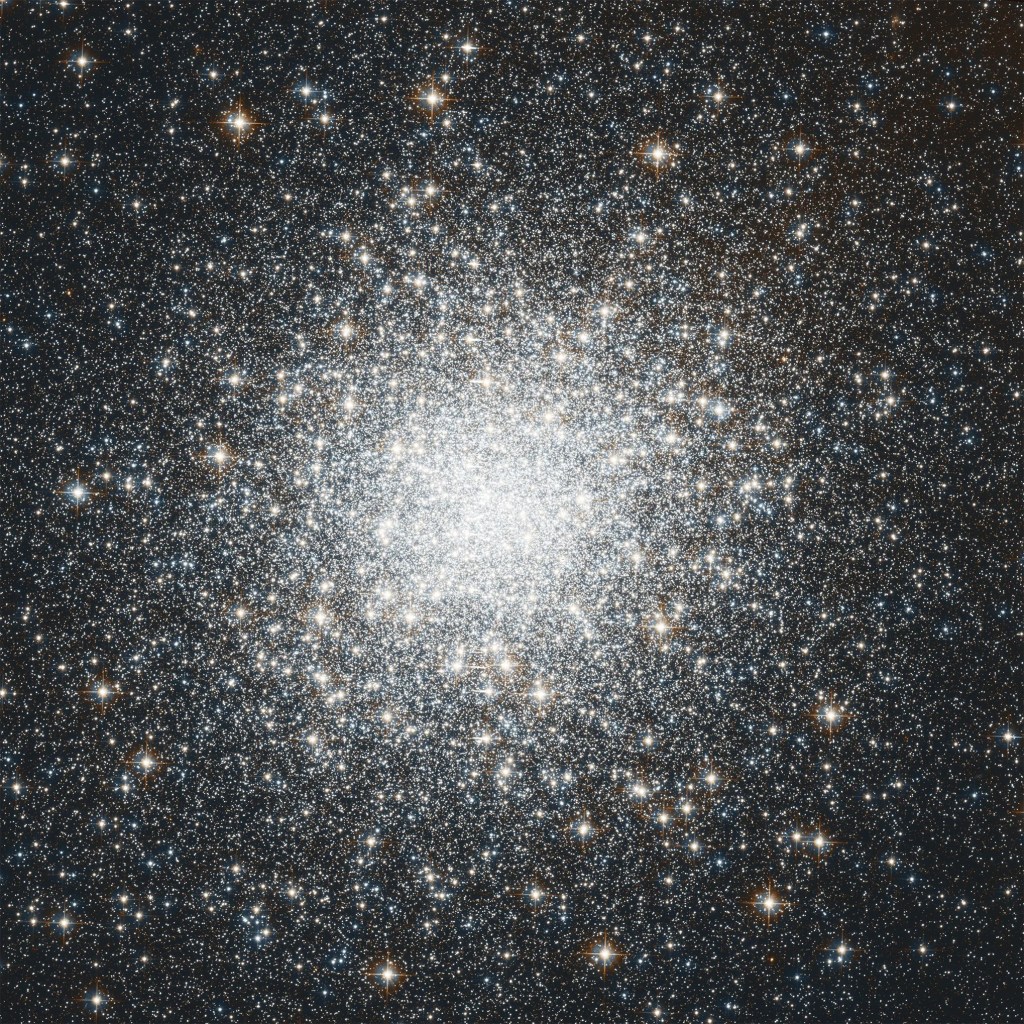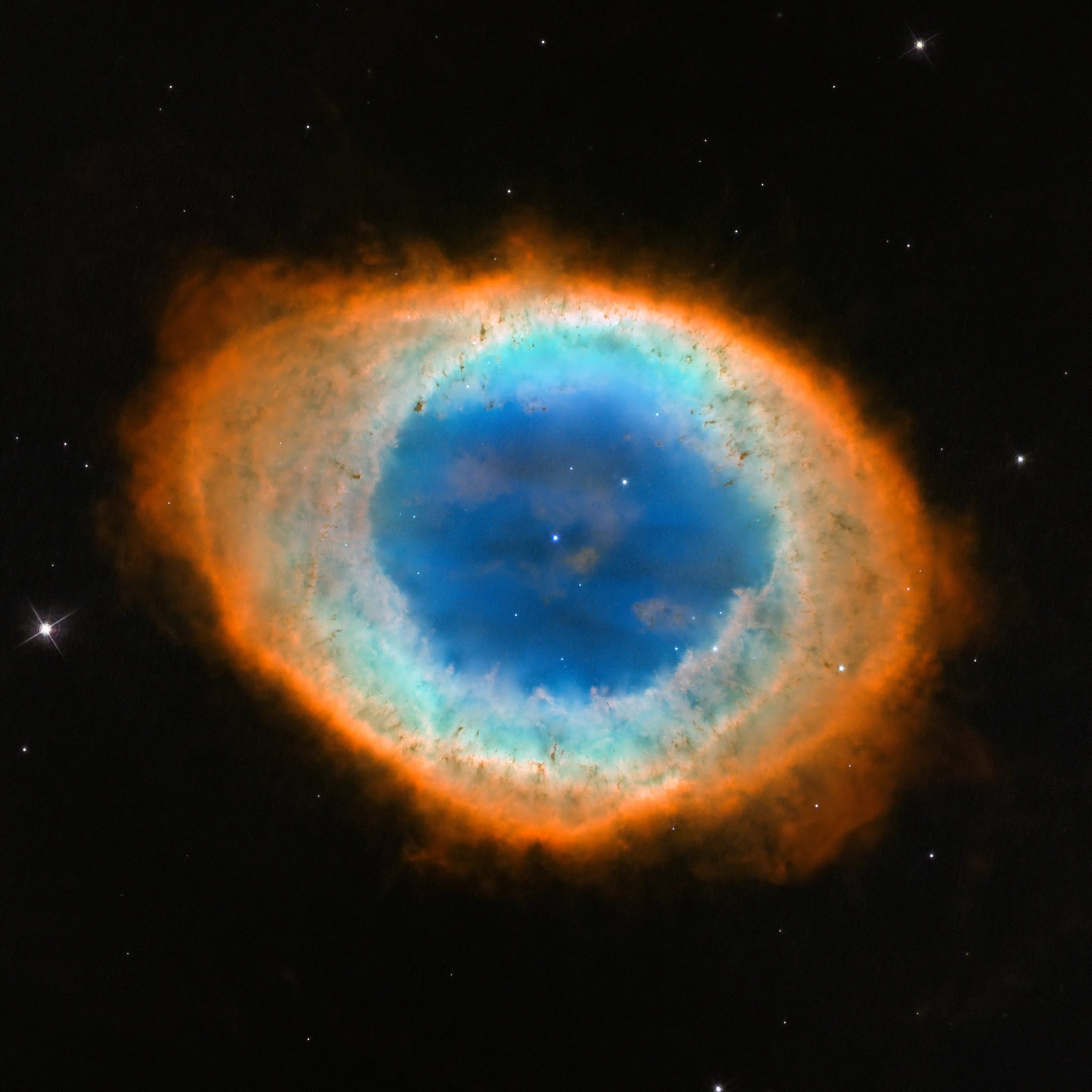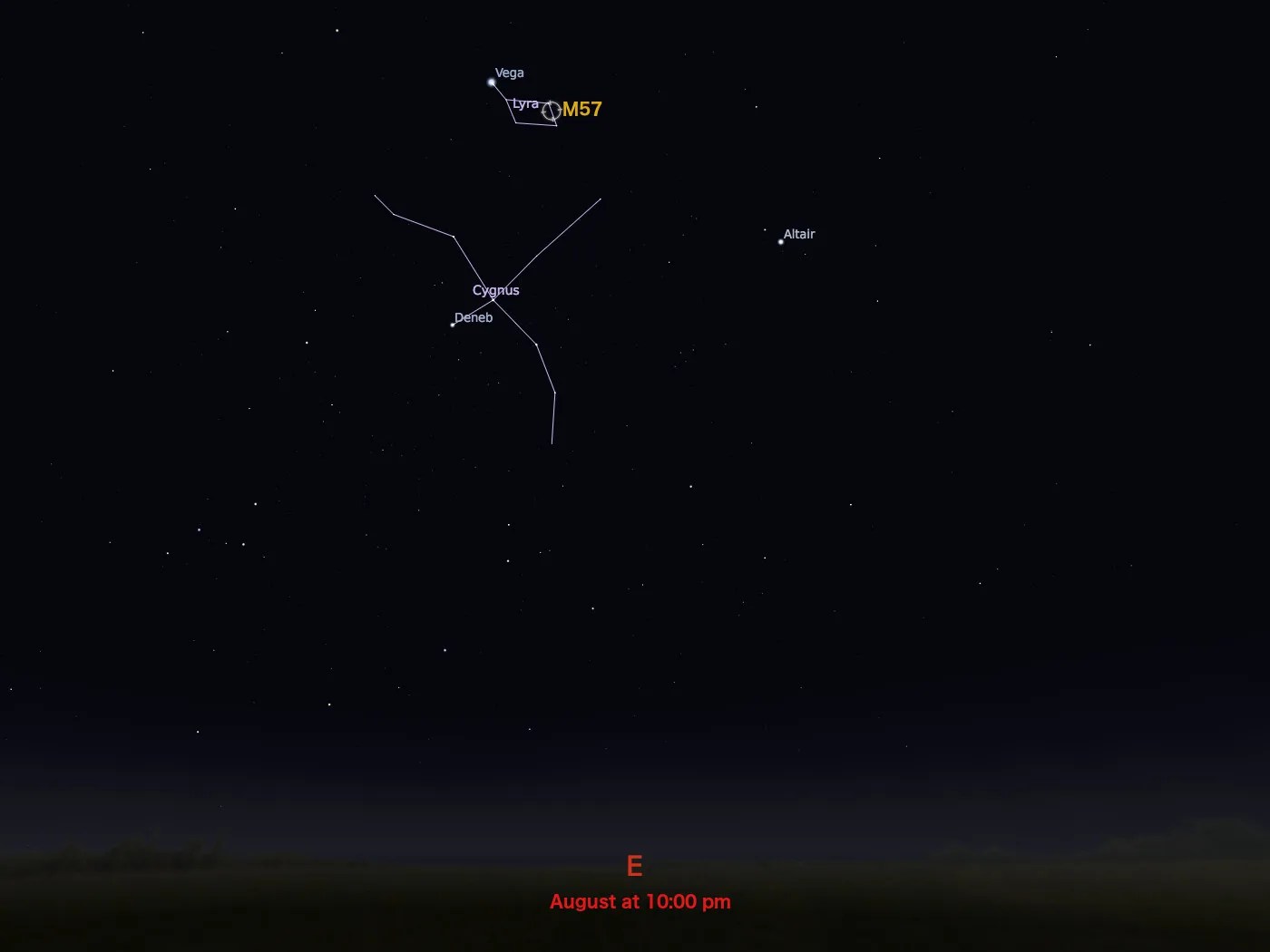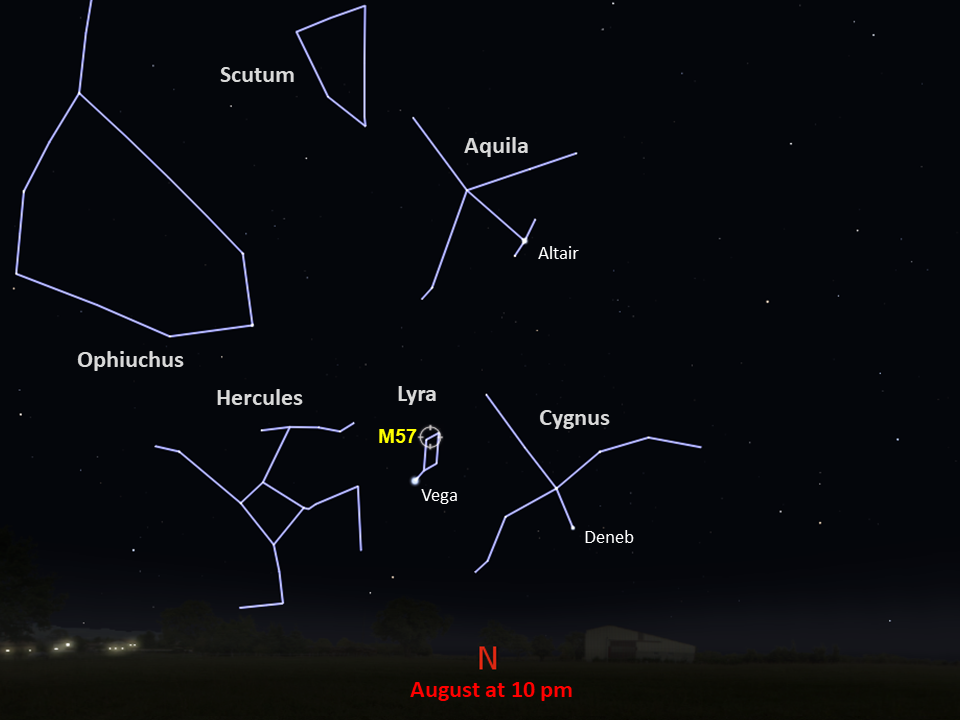Messier 57
Messier 57, better known as the Ring Nebula, is the glowing remains of a sun-like star.
Distance
2,000 light-years
Apparent Magnitude
8.8
constellation
Lyra
object type
Planetary Nebula
Messier 57, more commonly known as the Ring Nebula, is about 2,000 light-years away in the constellation Lyra. Discovered by the French astronomer Antoine Darquier de Pellepoix in 1779, the Ring Nebula has an apparent magnitude of 8.8. It is easy to find, as it lies about halfway between the two 3rd-magnitude stars “Sheliak” and “Sulafat” which form the bottom of Lyra’s lyre. However, it requires a moderately-sized telescope to resolve its beautiful ring-like details.
M57 is tilted toward Earth allowing us to see its ring face-on. This gorgeous, high-resolution Hubble image helped astronomers determine that the nebula’s shape is more complicated than initially thought. The blue gas in the nebula’s center is actually a football-shaped structure seen end-on that pierces the red, doughnut-shaped material. The inner rim of the ring displays an intricate structure of dark, irregular knots of dense gas that the stellar winds have not yet been able to blow away. The knots and their tails look like spokes in a bicycle.
This image of M57 was colorized to illustrate the nebula’s chemical composition. The deep blue color in the center represents helium, the light blue color of the inner ring is the glow of hydrogen and oxygen, and the reddish color of the outer ring is from nitrogen and sulfur.
NASA, ESA, and G. Bacon, F. Summers and Mary Estacion (STScI)
For more information on Hubble’s observations of M57, see:
- NASA's Hubble Space Telescope Reveals the Ring Nebula's True Shape
- Looking Down a Barrel of Gas at a Doomed Star
Explore Hubble's Messier Catalog
The following pages contain some of Hubble’s best images of Messier objects.

Overview The Messier catalog, begun by astronomer Charles Messier in the 18th Century and revised over the years, includes some…

Better known as the Crab Nebula, Charles Messier originally mistook Messier 1 for Halley’s Comet, which inspired him to create…

Hubble's image of Messier 2 is comprised of visible and infrared wavelengths of light.

































